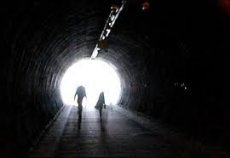New publications
The bright light at the end of the tunnel before death may be the result of an influx of serotonin in the brain
Last reviewed: 30.06.2025

All iLive content is medically reviewed or fact checked to ensure as much factual accuracy as possible.
We have strict sourcing guidelines and only link to reputable media sites, academic research institutions and, whenever possible, medically peer reviewed studies. Note that the numbers in parentheses ([1], [2], etc.) are clickable links to these studies.
If you feel that any of our content is inaccurate, out-of-date, or otherwise questionable, please select it and press Ctrl + Enter.

The bright light at the end of the tunnel that some barely surviving people report may be the result of a surge of serotonin in the brain.
About one in five people who are dangerously ill have such near-death experiences, and their causes are still unclear. Moreover, the neurobiological processes that accompany dying and death remain largely unexplored.
Alexander Wutzler from the Charité Medical University of Berlin (Germany) and his colleagues decided to go back to the origins - to one of the most ancient neurotransmitters from a phylogenetic point of view, serotonin. It is involved in mood regulation, as well as the processing of visual images and sounds.
The researchers overfed six rats with a painkiller and monitored what was happening in the brain. By the time of death, serotonin levels had tripled. Experts believe this could be due to the neuroprotective activity of the brain's serotonergic system, which softens the perception of the dying process (as noted above, serotonin regulates our mood).
"Do they really believe that rats have near-death experiences?" was all that commentator Jacob Howie of Monash University in Australia could say about the study.
